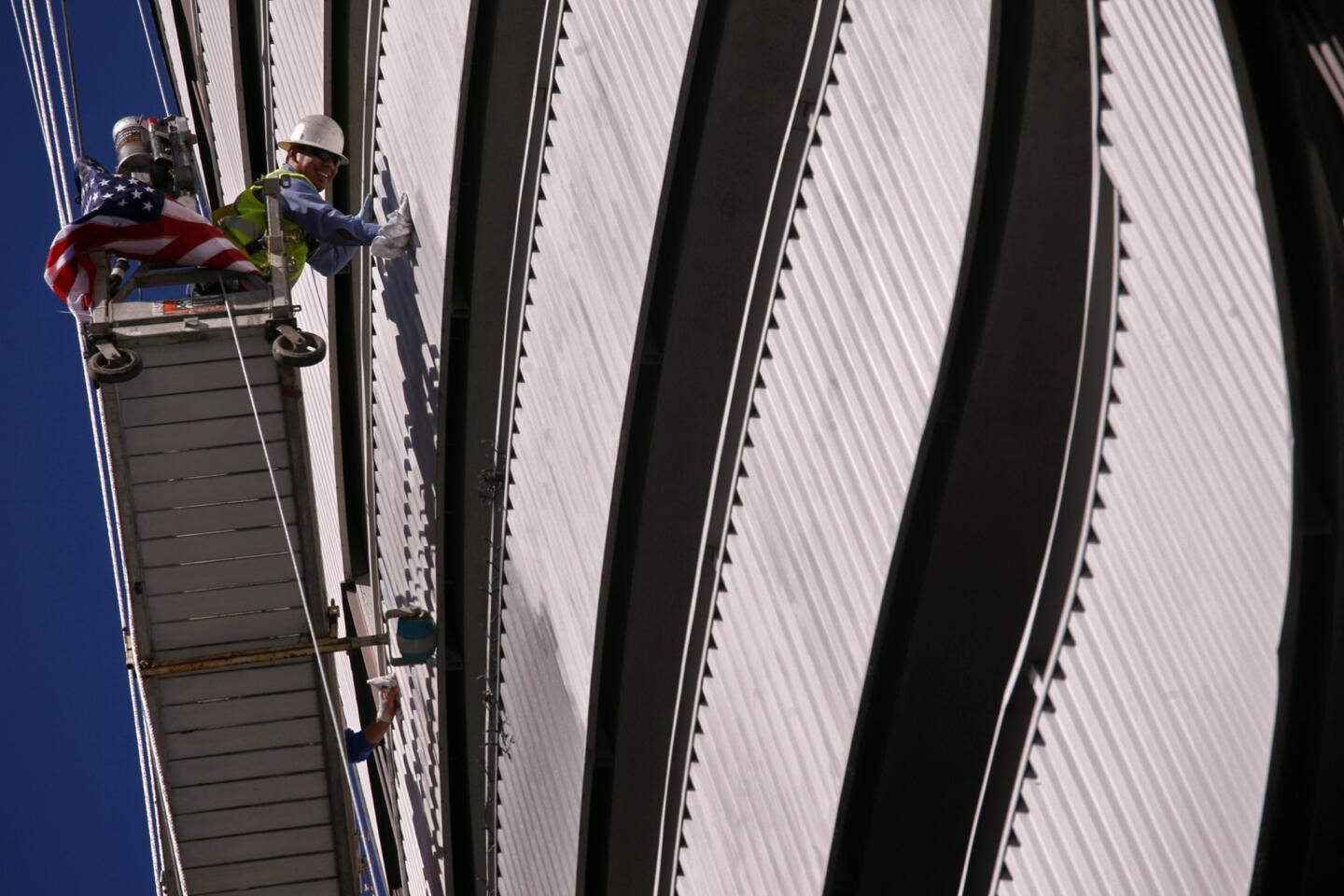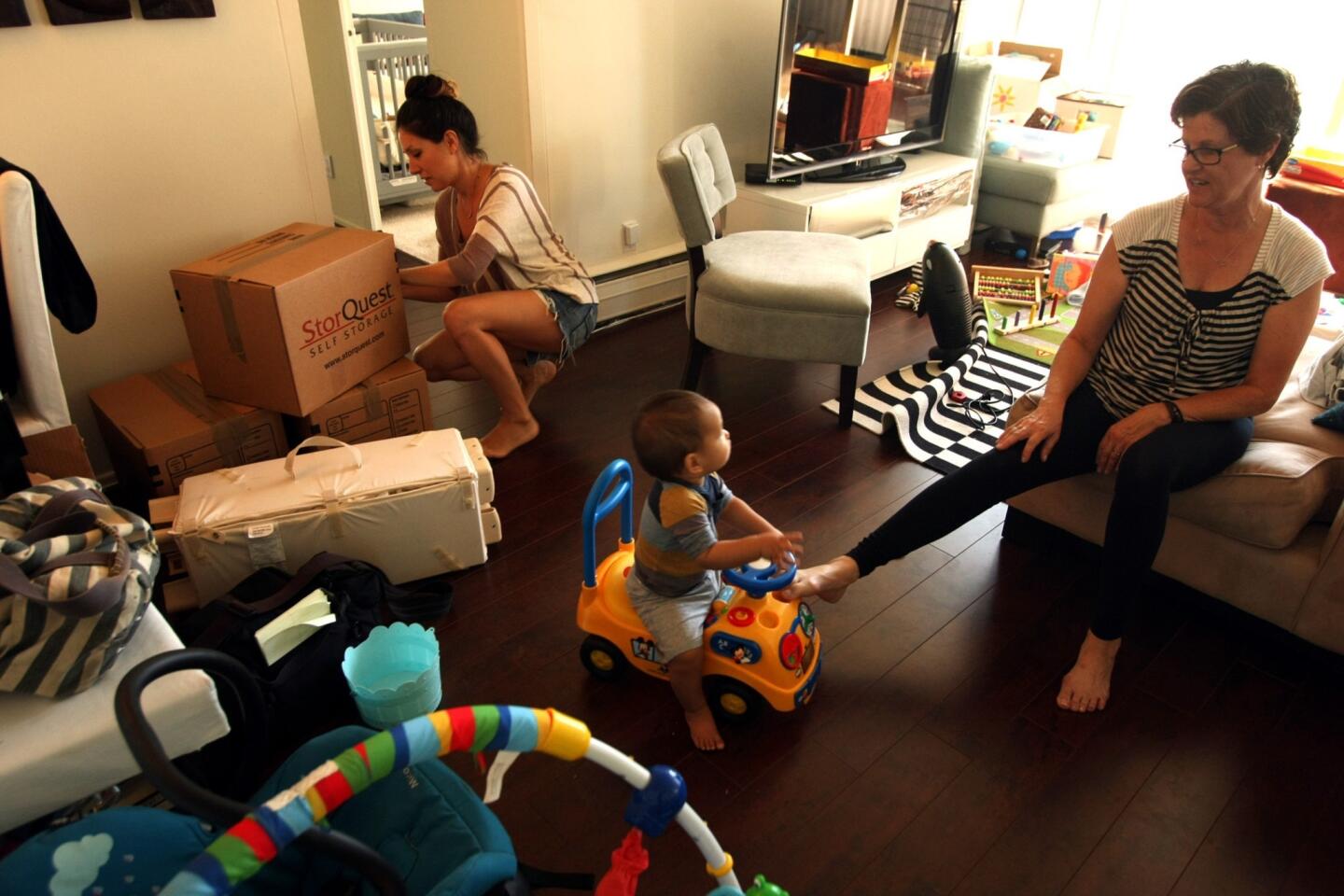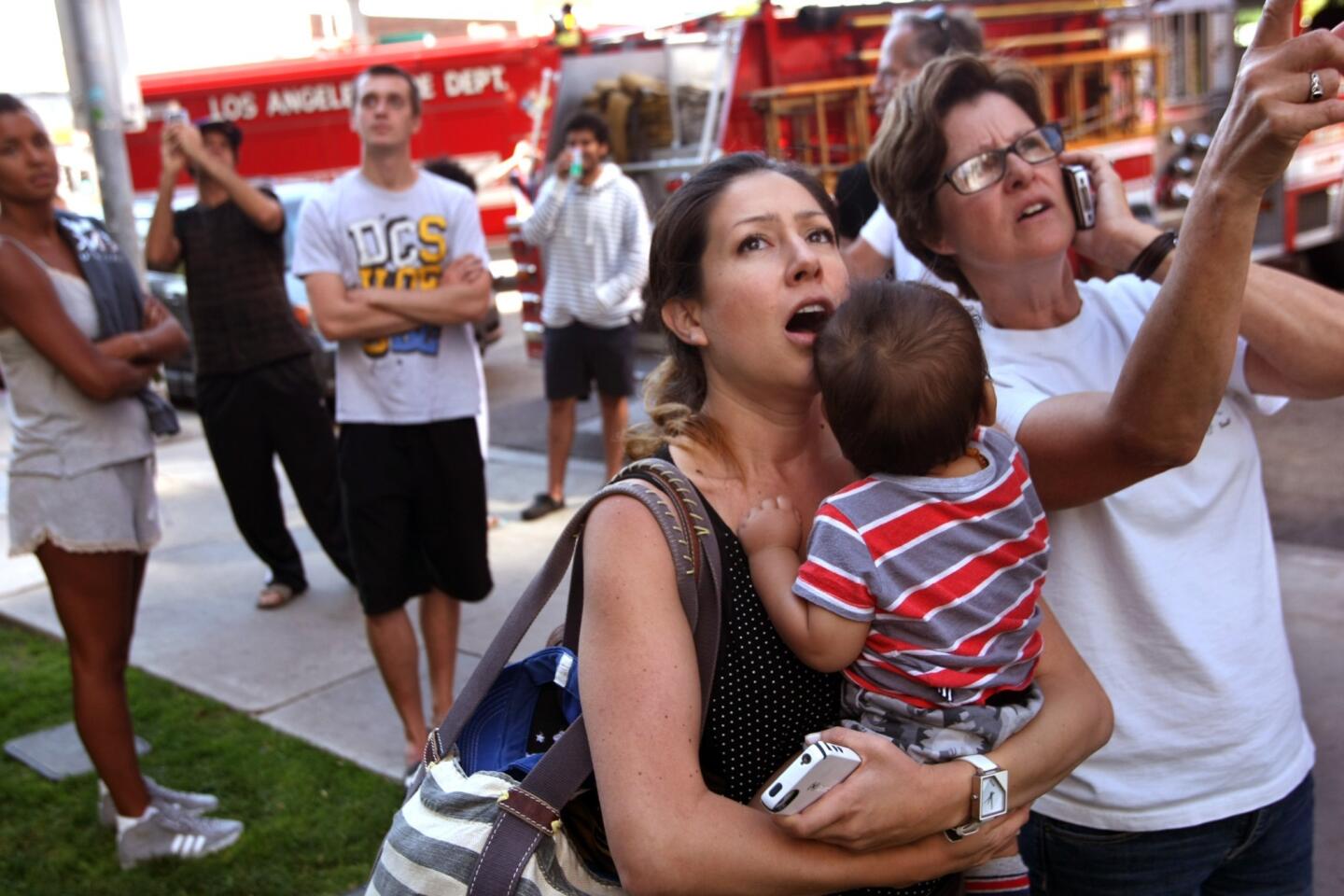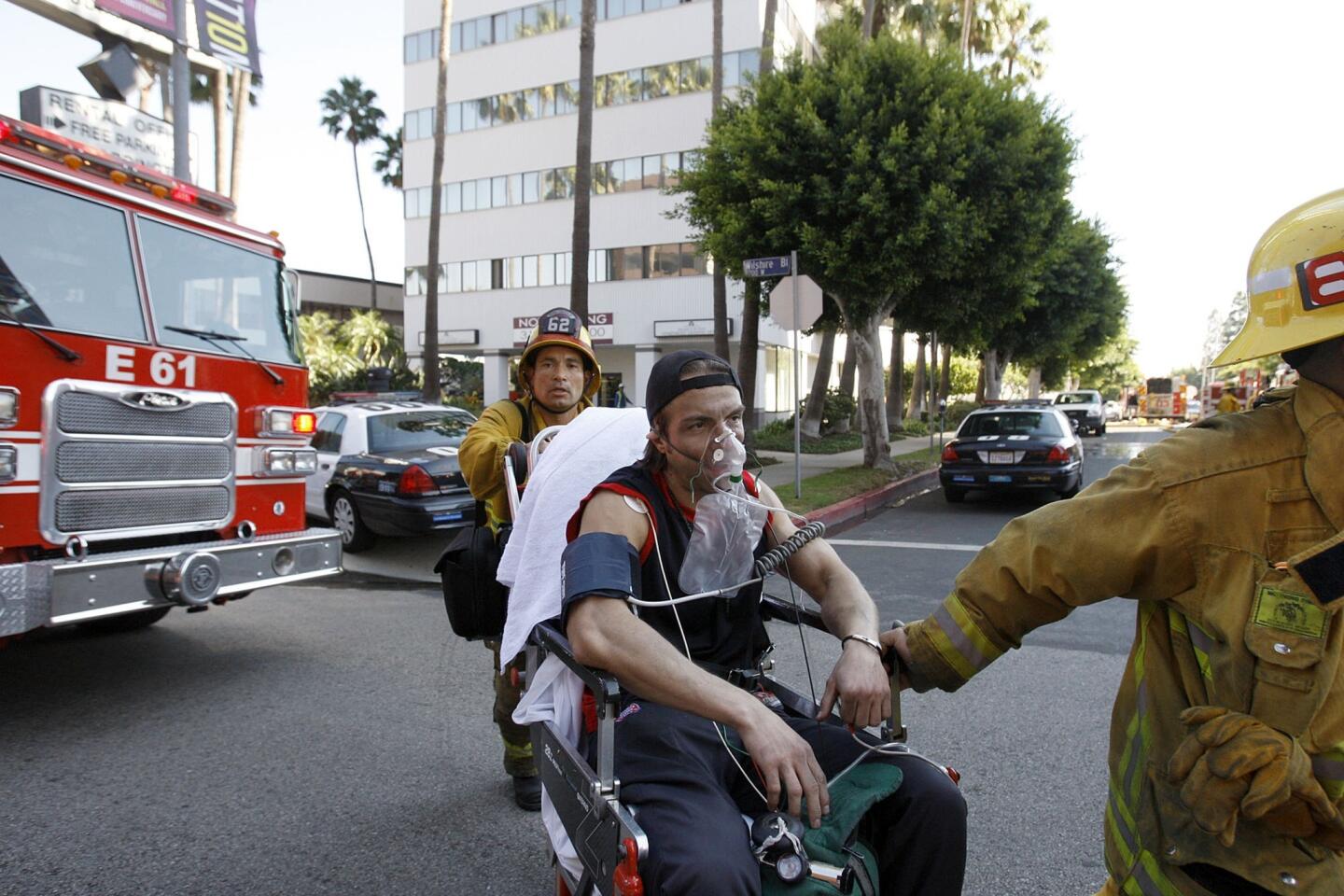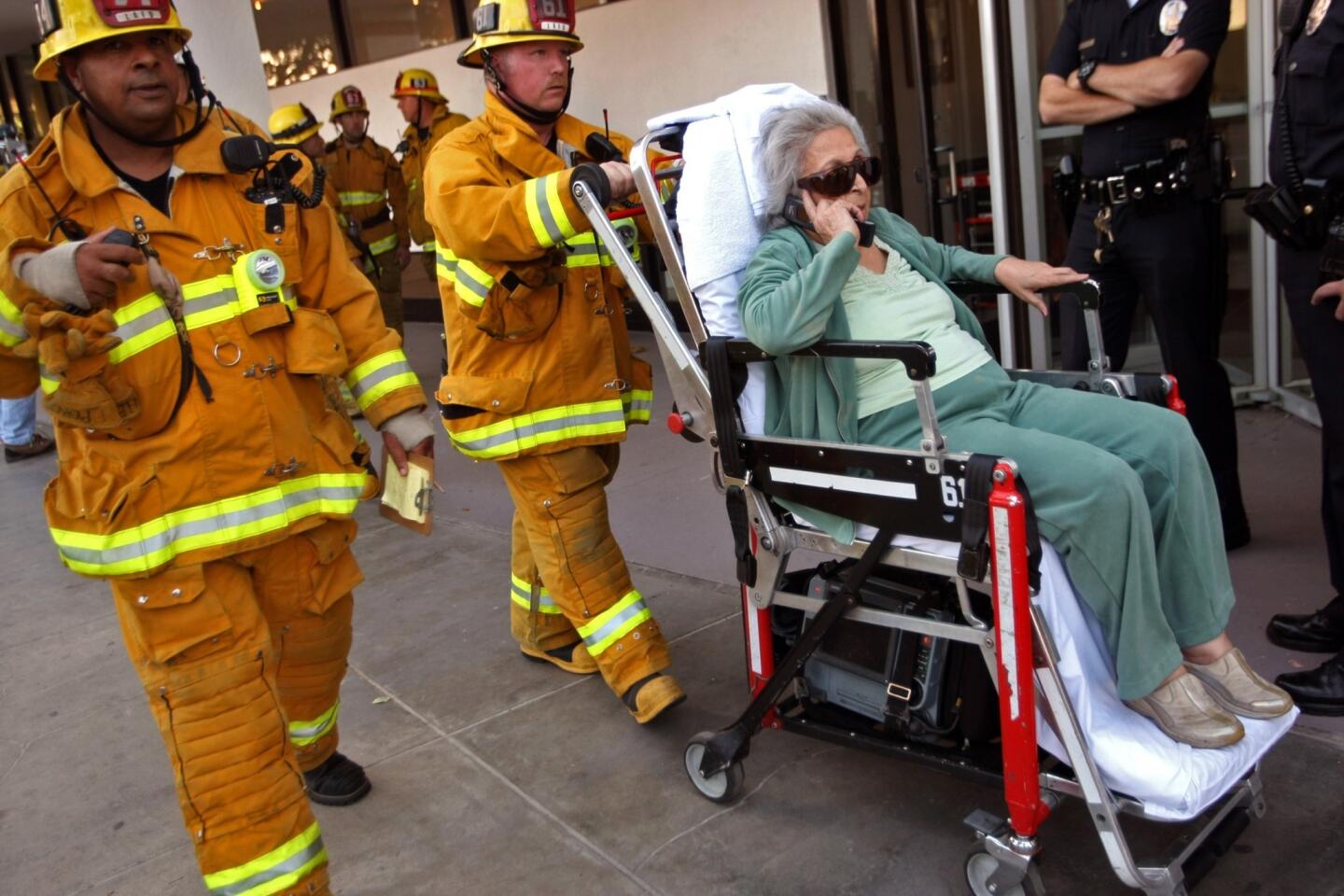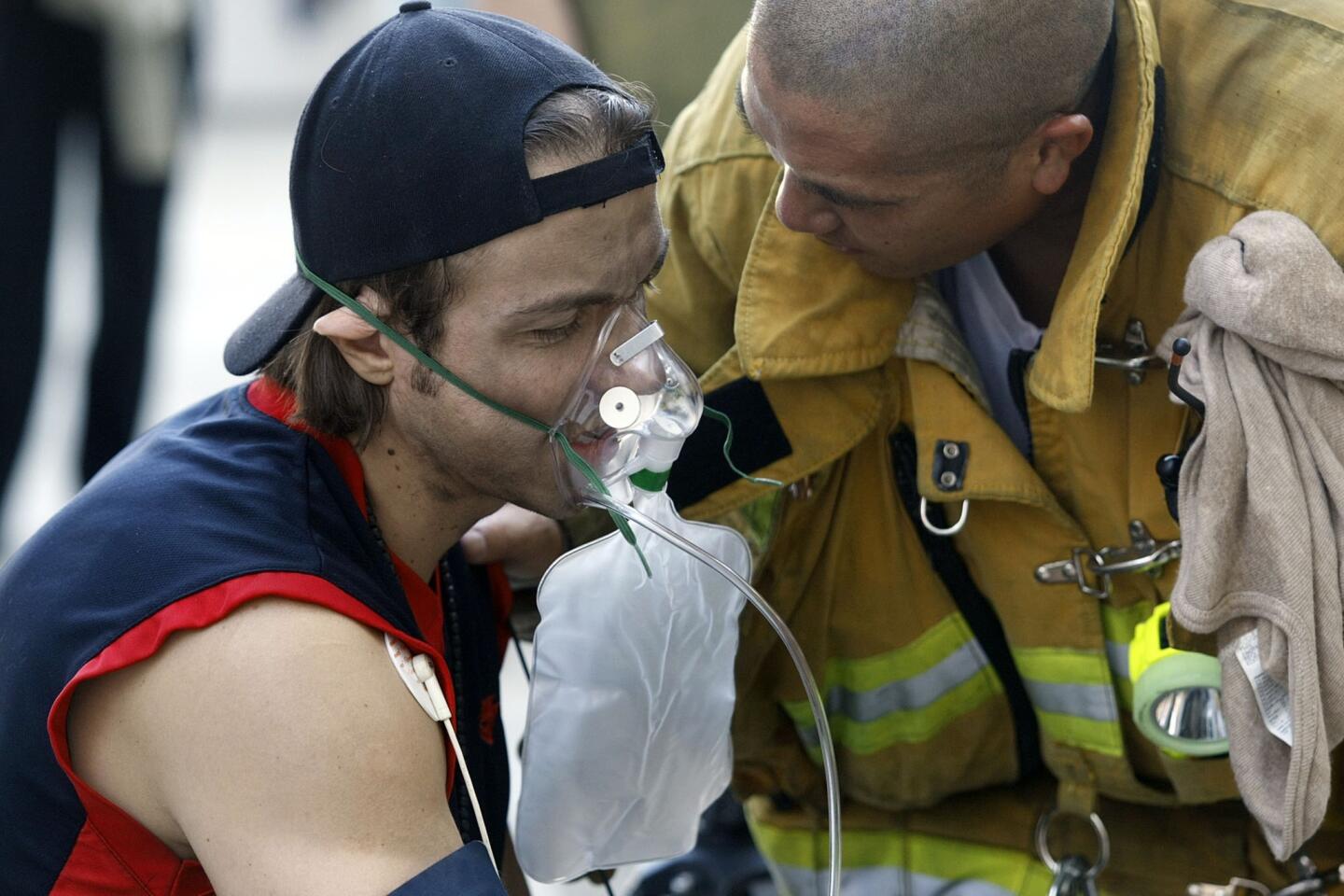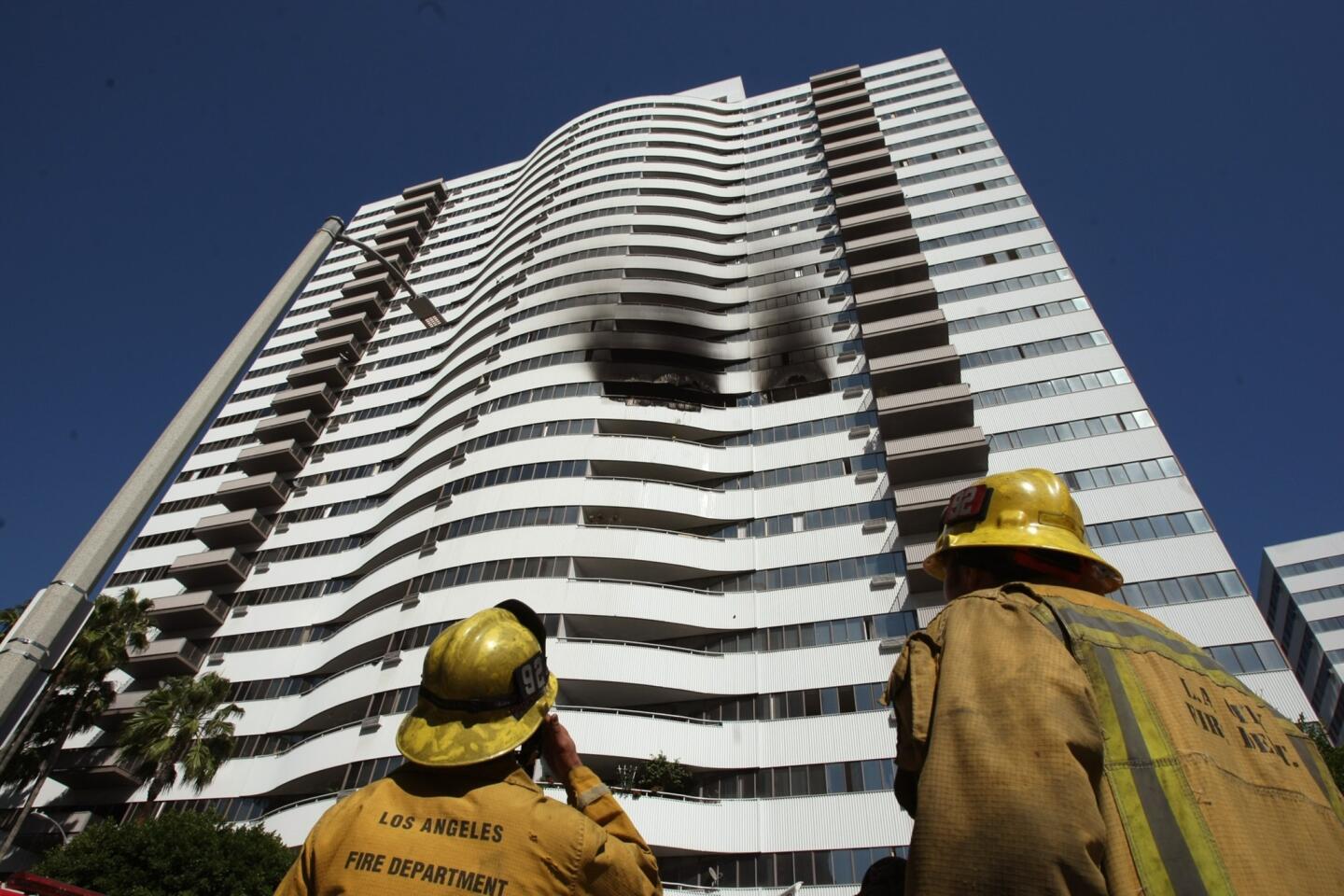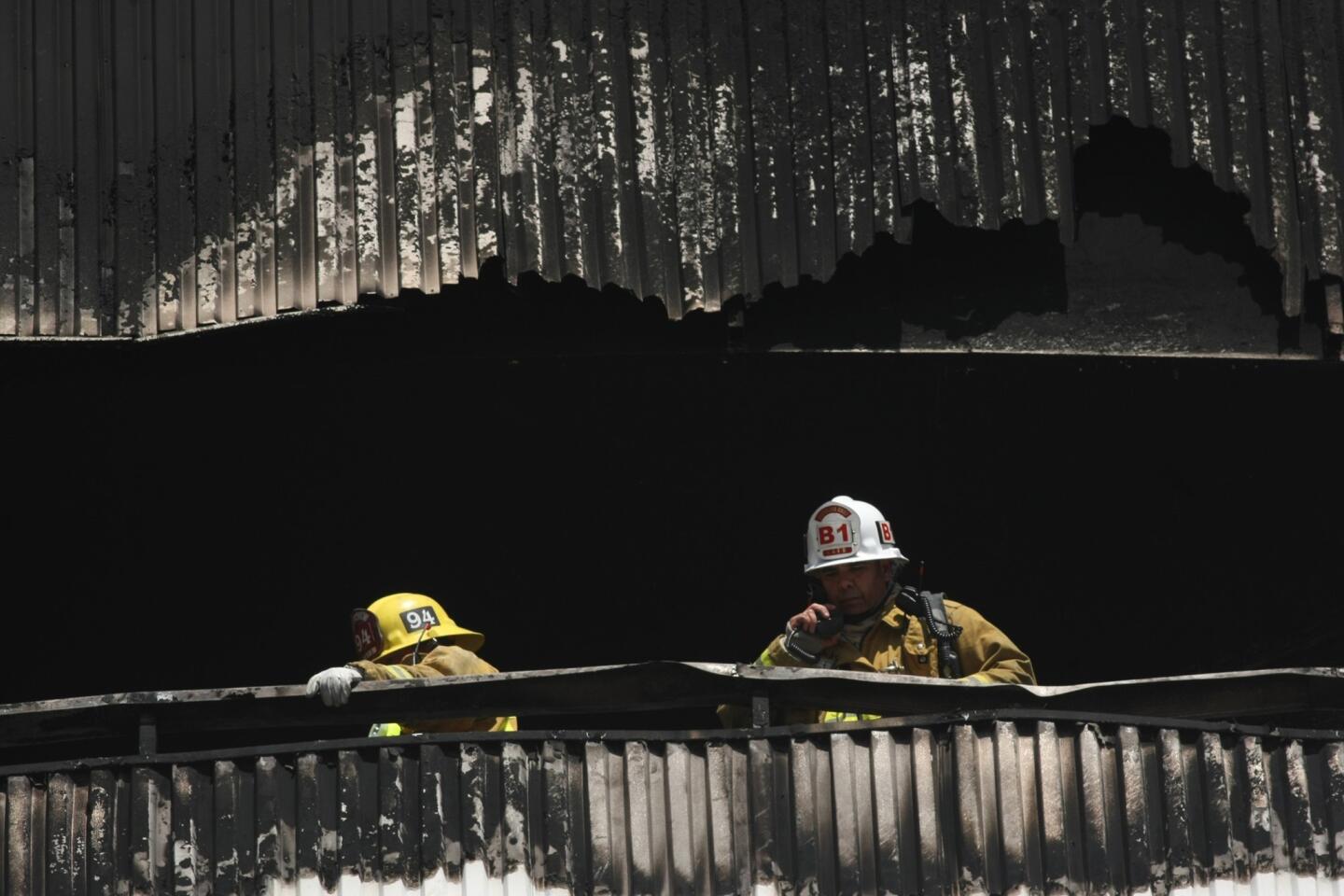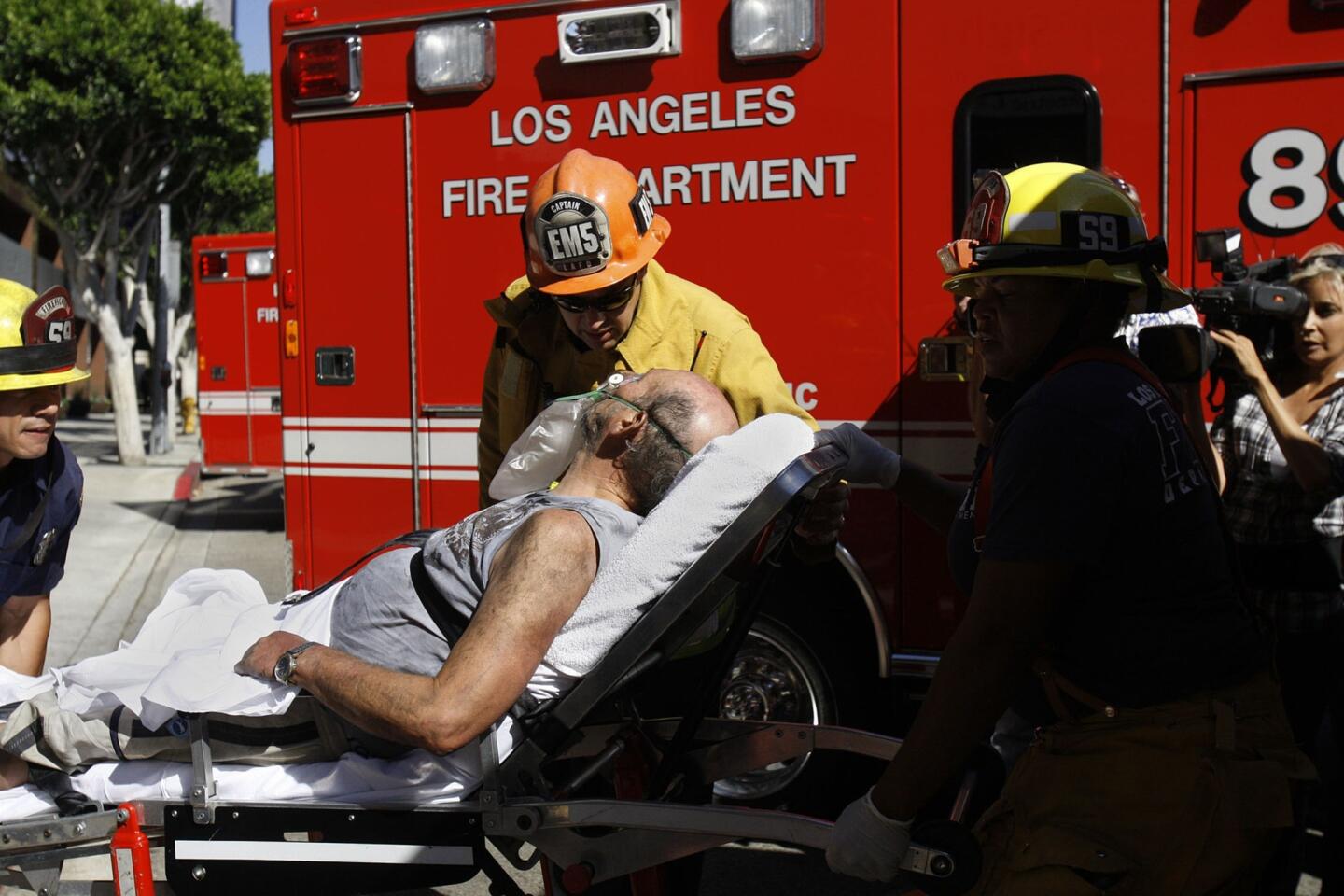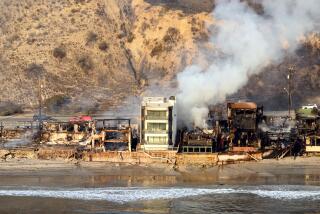35% of L.A.’s high-rise apartment buildings lack fire sprinklers
- Share via
Lindsay Bustillos didn’t realize her high-rise apartment building in West Los Angeles lacked sprinklers until a fire last fall made her unit uninhabitable.
The Oct. 18 fire at the Barrington Towers complex caused water and smoke damage that forced hundreds of residents to leave their apartments.
“You would think that when you move into a place like this that they kind of have it nailed down,” said Bustillos, 32, of the sprinker situation.
Although laws mandate that residential high-rises built before 1943 and after 1974 have fire sprinklers installed, that leaves a 30-year gap in which high-rises were built in Los Angeles without having to install sprinklers. By the city’s count, 71 of the city’s roughly 200 residential high-rises don’t have fire sprinkler systems installed.
The gap has been debated for years, but the Barrington fire has brought the issue into focus again.
“Disaster drives regulation,” said Los Angeles fire Battalion Chief Timothy Kerbrat. “If it’s a big disaster then the time to get the ordinance and changes take a little bit more time. If it’s not a big disaster, it’s a blip in the paper and we forget about it real quick.”
Los Angeles officials first made a push to retrofit all high-rises – commercial and residential - with sprinklers in 1988 after a fire at First Interstate Tower downtown killed one man and injured 40. But proponents opted to divide the proposal into two: one for businesses and one for residential.
“Our strategy at the time was: If we try to do them both we’re afraid we’re not going to get anything at all,” Kerbrat said.
Lawmakers approved retrofitting some 350 commercial buildings, but there was stronger resistance from residential building owners. The costs to retrofit were too high, they argued. It’s the same argument that was made in 2004 after a woman was critically burned in a tower in Koreatown.
“We’re always interested in providing clean, safe affordable housing,” said Jim Clarke, head of the Apartment Assn. of Greater Los Angeles. “If it doesn’t have fire sprinklers, it may not be the safest place to live, but at the same time you’re bound. Your hands are tied because of finances.”
Building codes changed dramatically in the United States after a high-rise fire in Brazil claimed more than 100 lives, Kerbrat said. Today’s residential high-rises are compartmentalized so fires don’t spread easily from unit to unit and staircases are pressurized so they don’t fill with smoke. Los Angeles has some of the strictest building codes in the country, he said.
But residential building owners typically have to front the costs for retrofitting and can only hope to recoup the money through grants. It’s difficult to get bank loans for the projects because repayment isn’t guaranteed, Clarke said.
Laws prohibit owners from passing the costs of the retrofitting on to tenants beyond an annual 3% rent increase, Clarke said, and if tenants are displaced, the building owner has to pay to put them up elsewhere.
“Those are things we’re trying to change,” he said. “We’re trying to make things both fair for the owner and the renter.”
Firefighting experts maintain a sprinkler system is the best first line of defense against a blaze.
“You’re significantly less likely to die in a fire if your residence is equipped with automatic fire sprinklers,” said Ray Bizal of the National Fire Protection Assn. “Clearly, in a high-rise building, you have added risk. You’re subjected to other people’s fire behavior, not only your own.”
After 24 people died in a fire in the four-story Dorothy Mae apartment complex near downtown in 1982, the city required more than 1,300 buildings built before 1943 be retrofitted with fire sprinklers. After the Brazil fire in 1974, state law required all new buildings from then on to have sprinklers installed.
In the meantime, Bustillos said the first question she asked her new landlords was if the building was outfitted with sprinklers.
“I have nightmares about not being able to get out,” she said. “You never really think a fire is going to happen to you, I guess.”
Twitter: @josephserna
More to Read
Sign up for Essential California
The most important California stories and recommendations in your inbox every morning.
You may occasionally receive promotional content from the Los Angeles Times.

